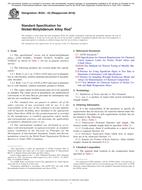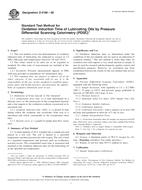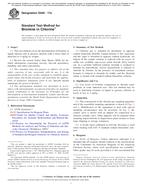1.1 The sound isolation between two spaces in a building is determined by a combination of the direct transmission through the nominally separating building element (as normally measured in a laboratory) and any transmission along a number of indirect paths, usually referred to as flanking paths. illustrates the direct paths and some possible structural flanking paths. Additional non-structural flanking paths may include transmission through common air ducts between rooms, or doors to the corridor from adjacent rooms.
1.2 The main part of this test method defines procedures and metrics to assess the sound isolation between two rooms in a building separated by a common partition including both direct and flanking transmission paths. Appropriate measures and their single number ratings are the noise reduction (NR) and noise isolation class (NIC), the normalized noise reduction (NNR) and normalized noise isolation class (NNIC), and the apparent transmission loss (ATL) and apparent sound transmission class (ASTC). With the exception of the ATL and ASTC under specified conditions, these procedures are only applicable when both room volumes are less than 150 m³.
Note 1
The word “partition” in this test method includes all types of walls, floors, or any other boundaries separating two spaces. The boundaries may be permanent, operable, or movable.
1.3 provides methods to assess the sound transmission through a partition or partition element with the influence of flanking transmission reduced. These methods may be used when it must be demonstrated that a partition has achieved a specified minimum sound attenuation. The results are the field transmission loss (FTL) and field sound transmission class (FSTC).
1.4 provides methods to measure the sound isolation between portions of two rooms in a building separated by a common partition including both direct and flanking paths when at least one of the rooms has a volume of 150 m³ or more. The results are the noise reduction (NR) and noise isolation class (NIC).
This standard may involve hazardous materials, operations, and equipment. This standard does not purport to address all of the safety concerns, if any, associated with its use. It is the responsibility of the user of this standard to establish appropriate safety and health practices and determine the applicability of regulatory limitations prior to use.
Product Details
- Published:
- 04/01/2005
- Number of Pages:
- 11
- File Size:
- 1 file , 150 KB
- Redline File Size:
- 2 files , 350 KB


